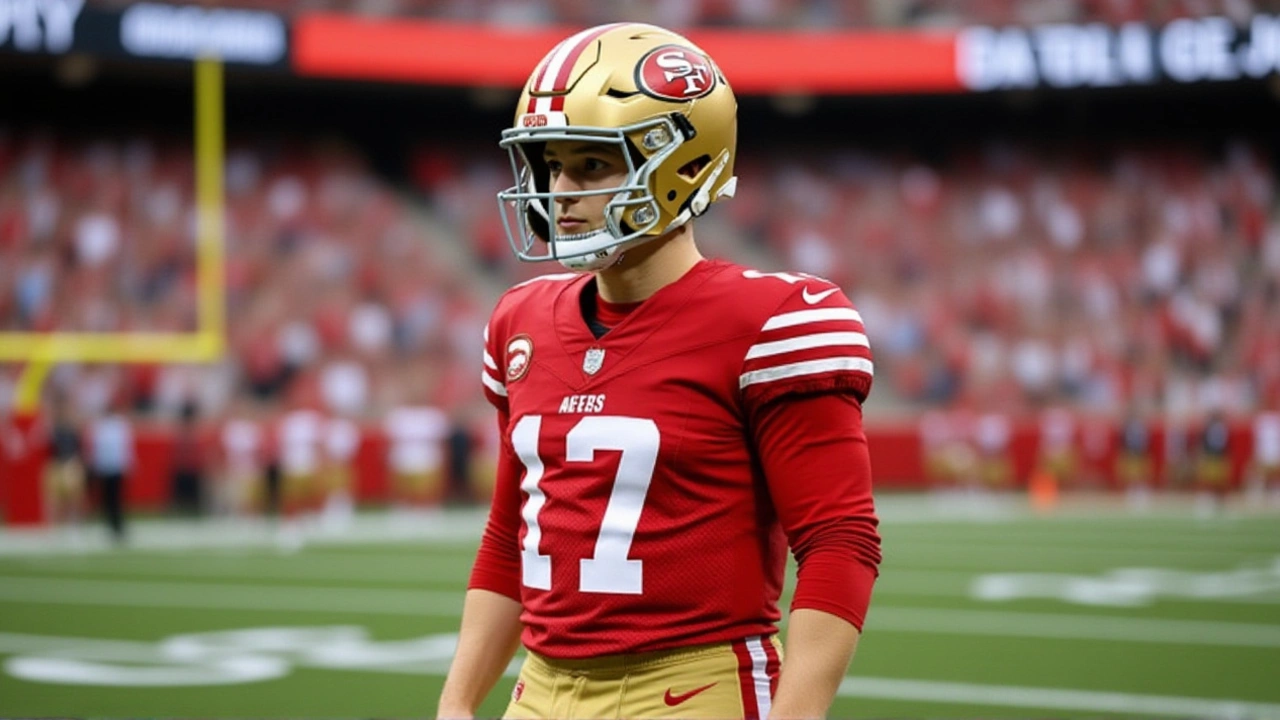San Francisco 49ers
When talking about San Francisco 49ers, the professional football franchise located in the Bay Area, famous for its red and gold colors and five Super Bowl titles. Also known as 49ers, they blend historic prestige with modern ambition. Their brand is built on a mix of explosive offense, hard‑nosed defense, and a fan base that lives for the next big play. If you're hunting for the latest on the San Francisco 49ers, you’re in the right spot.
How the NFL Shapes the 49ers' Journey
The NFL, the league that governs professional American football in the United States. Also called the National Football League, it sets the schedule, rules, and playoff format that every team, including the 49ers, must follow. Because the NFL requires each franchise to meet salary‑cap limits, the 49ers constantly balance star contracts with depth players. The league’s emphasis on parity means the 49ers need to adapt quickly, whether that’s tweaking a playbook or scouting untapped talent.
One of the biggest ways the NFL influences the 49ers is through its competitive structure. The league’s division alignment places them in the NFC West, a group that includes the Seahawks, Rams, and Cardinals. This creates a mini‑warzone where every game can swing the standings dramatically. The 49ers’ success often hinges on how well they handle these rivalries, making each conference matchup a make‑or‑break moment.
The NFL also drives the media landscape around the team. Prime‑time slots, national broadcasts, and streaming deals give the 49ers a platform to showcase their brand beyond the Bay Area. This exposure feeds back into ticket sales, merchandise, and even player recruitment, creating a feedback loop where league decisions directly affect the franchise’s bottom line.
Overall, the NFL’s rules, schedule, and revenue model serve as the foundation upon which the 49ers build their season‑long strategy.
Divisional Playoffs: The 49ers’ Path to Glory
The Divisional Playoffs, the second round of the NFL postseason where eight teams battle for a spot in the conference championship. Also referred to as the “Divisional Round,” these games are where a single mistake can end a season’s hopes. For the 49ers, earning a spot in the Divisional Playoffs means surviving a tough regular‑season grind and capitalizing on key momentum moments.
Historically, the 49ers have used strong quarterback play and a stout run game to get through this round. In recent years, a balanced attack has helped them upset higher‑seeded opponents. The 2025 schedule, for example, pits the 49ers against a defensively‑sound opponent that thrives on turnover creation, meaning the 49ers must protect the ball and execute in the red zone.
Strategically, the Divisional Playoffs force coaches to fine‑tune game plans within a week’s preparation time. The 49ers’ coaching staff often leans on advanced analytics to decide whether to attack the middle of the field or stick to outside runs. The outcome of this tactical decision can dictate whether the team advances to the conference championship or sees its season end.
Fans also feel the intensity: ticket demand spikes, local bars fill up, and social media buzz reaches a fever pitch. The energy from the community often fuels the team’s performance, turning the Divisional Playoffs into a shared experience that goes beyond the field.
The NFL Draft: Building the 49ers’ Future
The NFL Draft, the annual event where NFL teams select eligible college players to add to their rosters. Also called the “Draft,” it’s the primary way the 49ers restock talent, address weaknesses, and manage the salary cap.
When the 49ers approach the Draft, they evaluate three main factors: positional need, best player available, and long‑term contract value. A successful draft can set up a quarterback pipeline, reinforce the defensive line, or secure a play‑making receiver. For instance, a recent pick at tight end added a versatile weapon in the short‑passing game, instantly expanding offensive options.
The Draft also interacts with the team’s free‑agency strategy. If the 49ers secure a high‑impact rookie, they might avoid a costly free‑agent contract for the same position, preserving cap space for veteran leadership elsewhere. Conversely, missing on a top prospect could push the front office to pursue aggressive free‑agency moves, reshaping the roster dramatically.
Beyond the mechanics, the Draft fuels fan excitement. Mock drafts, expert panels, and live streaming generate buzz that keeps the 49ers in the conversation year‑round. This continuous engagement helps maintain a loyal fan base even when the team is in a rebuilding phase.
Contracts, Ownership, and the Business Side
Behind every lineup lies a web of contracts and ownership decisions that shape the 49ers’ competitive edge. Player contracts include base salaries, performance bonuses, and injury guarantees. The team’s ownership, led by a group of investors, must approve these deals while staying under the NFL’s salary‑cap rules.
A well‑structured contract can motivate a player to perform at his peak, while a poorly negotiated deal can lead to disgruntlement or a costly release. The 49ers’ front office typically brings in seasoned agents who negotiate fees—often around five percent of the total contract value—to ensure both the player’s and team’s interests align.
Ownership also influences the franchise’s culture. Decisions about stadium upgrades, community outreach, and marketing campaigns all stem from the owners’ vision. When the owners prioritize fan experience, ticket sales rise, creating more revenue to invest back into the squad.
These business elements don’t exist in a vacuum; they directly affect on‑field performance, roster stability, and long‑term success. Understanding this interplay helps fans appreciate why certain moves happen during the season.
Below you’ll find a mix of news, analysis, and deep dives that cover everything from game previews and playoff scenarios to draft strategies and contract insights, giving you a full picture of the San Francisco 49ers’ current landscape.
